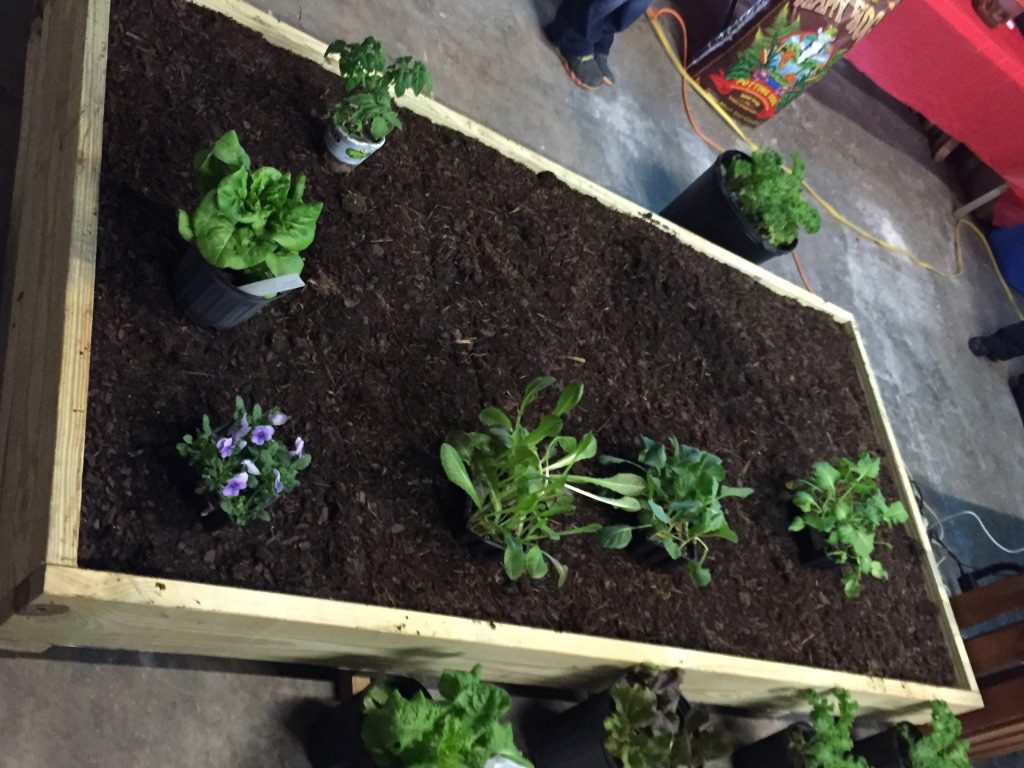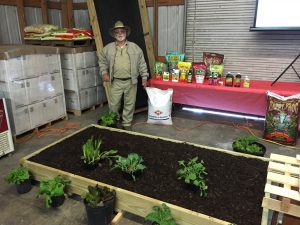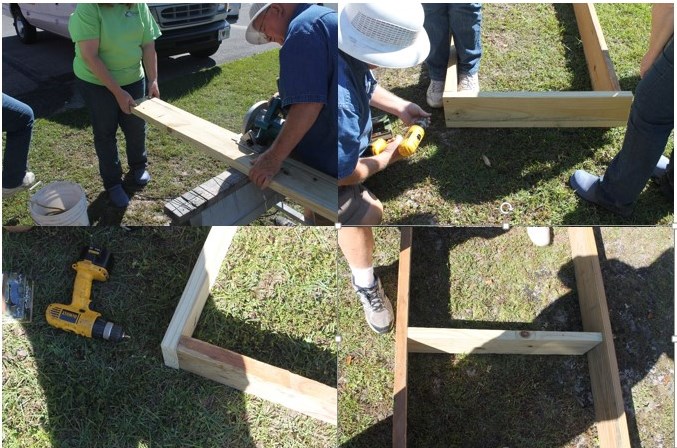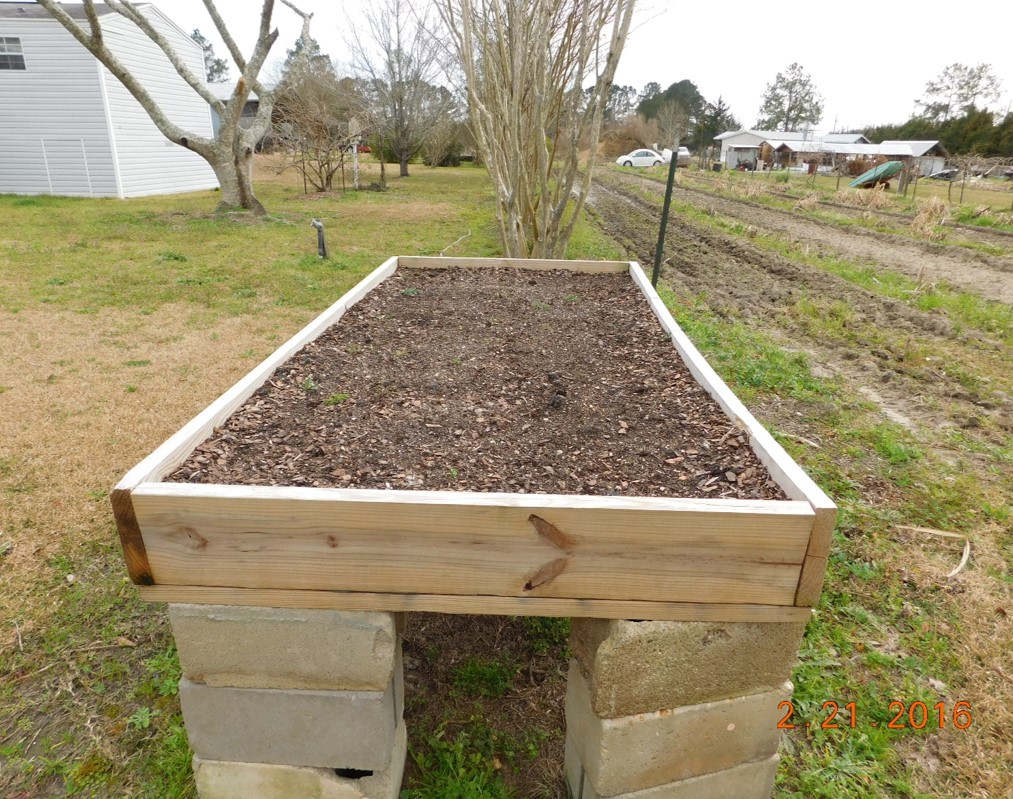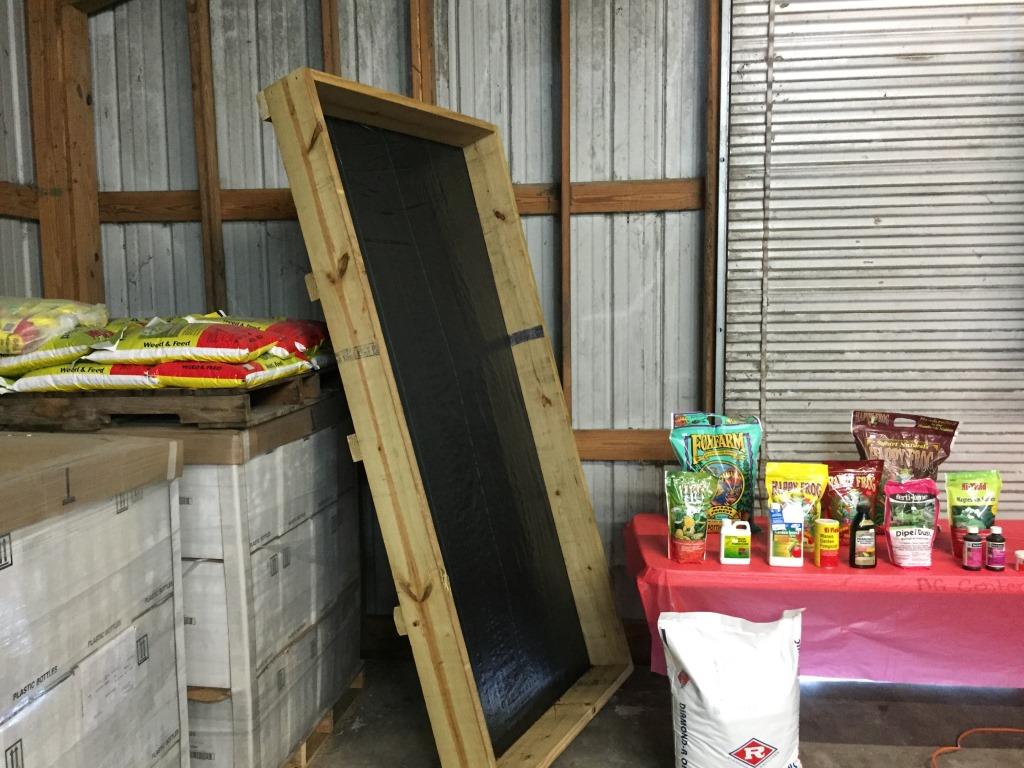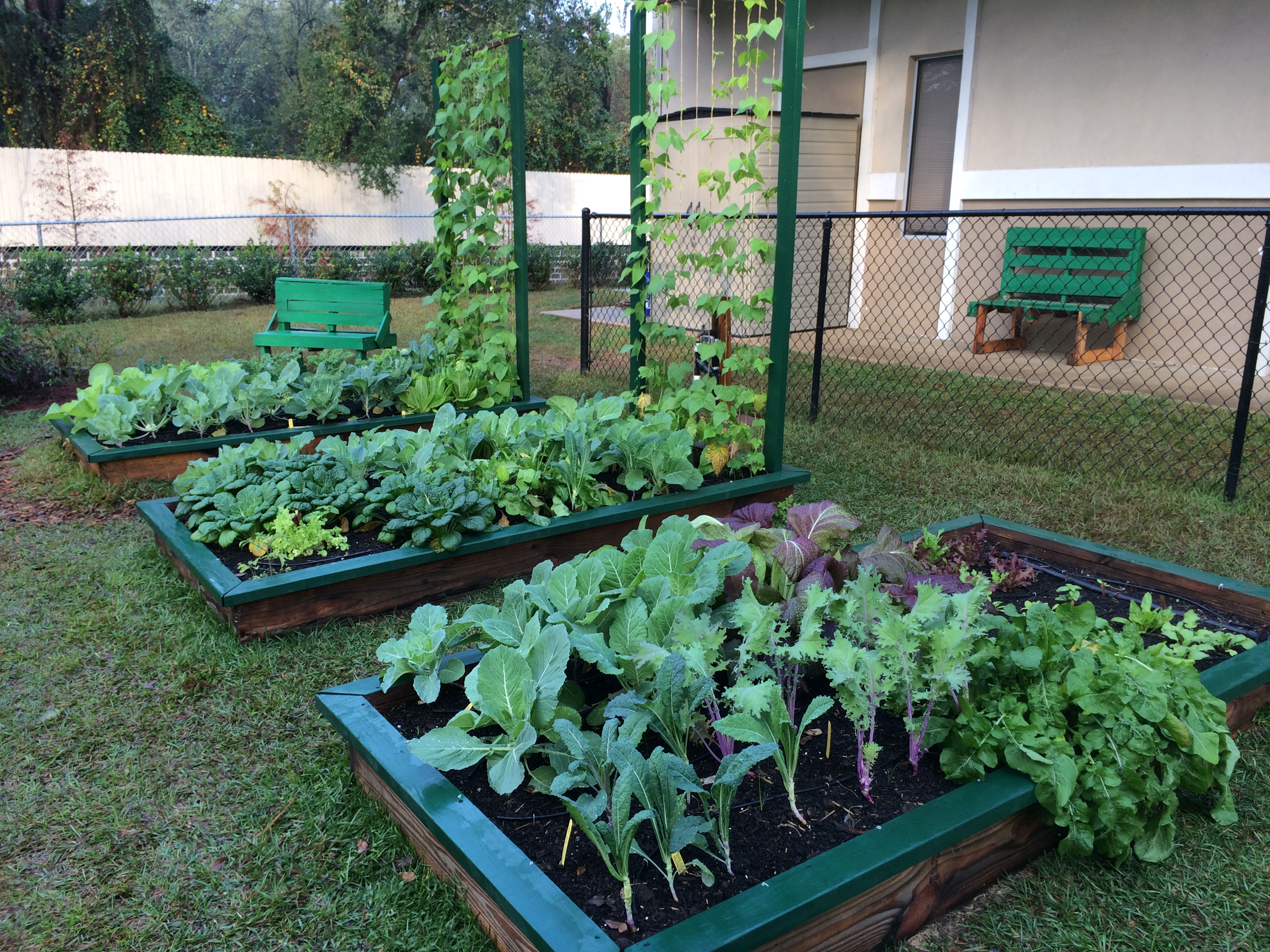
Raised Bed Gardening 101
Want to start a vegetable garden, but don’t know where to start? Are you seeing rectangular boxes popping up all over your neighbors’ yards and wondering why? Well, I am here to spread the news of raised-bed gardening!
Raised-bed gardening is a convenient way to grow vegetables without worrying about the quality of your soil. This is because you will be bringing in a high quality soil mix to your site. Vegetable plants need nitrogen, phosphorus, potassium, and many other nutrients to grow and mature properly. In many Florida Panhandle soils, we either have too much sand, too much clay, and nearly always, not enough organic matter. Organic matter results from the various stages of decay of anything that was alive. Think of it as the “glue” that holds the soil together, improves both soil moisture-holding capacity and drainage, and slowly releases nutrients that become available to the plant.
Although you could add nutrients and organic materials to your soil without building a raised bed, the walls of a raised bed will hold your soil in place, reduce erosion, and even help keep out weeds. Here are a few things to consider when planning the installation of a raised-bed garden:
Location
The most important thing to consider when picking your location is sunlight. Vegetable plants need a lot of direct sunlight for optimum production. Leafy vegetables (lettuce, kale, arugula) can tolerate four to five hours, but fruiting crops (tomatoes, squash, peppers) generally need six hours of full sunlight to grow strong and produce fruit.
When starting a garden, remember that we are in the northern hemisphere, and this means the sun dips to the south, especially in the winter. Objects therefore cast a shadow to the north, so pay attention to the position of southern tree lines, houses, and anything else that may block the sun. If you must choose, morning sun is better than afternoon sun, as afternoon sun can be very extreme in our area, especially in the summer.
Lastly, consider visibility! If you stick your garden in the very back corner of your yard, how often will you see it? The more visible it is in your daily life, the more likely you will notice easy-to-pull weeds, when your garden needs watering, what is ready to be harvested, and everything else that goes on in the garden.
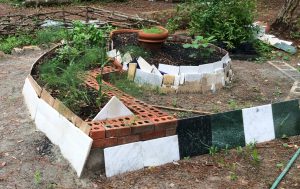
Although wood is most popular, you can use materials such as concrete, bricks, or tiles to build a raised bed. Photo by Molly Jameson.
Materials
Now you have chosen a perfect garden location. What materials should you use to build your raised bed? Lumber is the most popular material. But you could use concrete blocks, bricks, tiles, or anything else that can support soil. You can make your beds as long as you like, but the important thing to remember is not to make the raised bed wider than four feet. This will allow you to reach all areas of your soil without stepping into the bed, which causes compaction. If you are working with kids, two or three feet wide is even better. You should make the height of your bed 10 to 12 inches, which will allow good drainage and enough space for your vegetable plants to develop strong roots.
When choosing lumber, you can go with untreated or treated wood. Within the last 15 years, wood preservatives considered unsuitable for raised-bed gardening have been phased out. There is well-documented research that has shown the newer products are considered safe for gardening. Although untreated wood typically will not last as long as treated, even treated wood will still begin to decompose after a few seasons. Either way, connect your wood with lag bolts, instead of nails, to hold the wood together tightly.
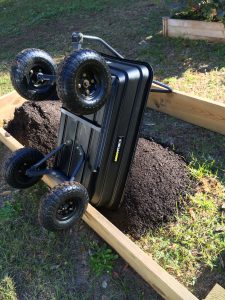
When filling a four ft. by eight ft. raised bed, you will need about 1 cubic yard of soil mix. Photo by Molly Jameson.
Soil
Now that you have your raised-bed structure built, what will you put in it? There are many landscape and nursery companies that can offer vegetable garden soil mixes for purchase in bulk. Typically, they will be about 50 percent compost (organic matter) and 50 percent top soil (nutrient-containing minerals). If you are filling a four foot by eight foot by 12 inch raised bed, you will need about one cubic yard of soil mix, which typically costs $30 to $60. This is about the volume of the back of a pick-up truck. If you do not have access to a truck, most companies will deliver in bulk for a $30 to $50 fee. This could be worth it if you are filling up multiple beds! Seasonally, you will then need to top off your raised bed as your soil will shrink as the organic materials decompose. But for this, you can buy bagged soil mixes or make your own compost.
The last step is filling your raised bed with vegetable plants! This could also be considered the first step… as you now must consider plant spacing, spring vs. fall vegetables, seeding into the garden vs. using transplants, trellising, pest control, harvesting…but we’ll save all that for future articles. Happy gardening!


